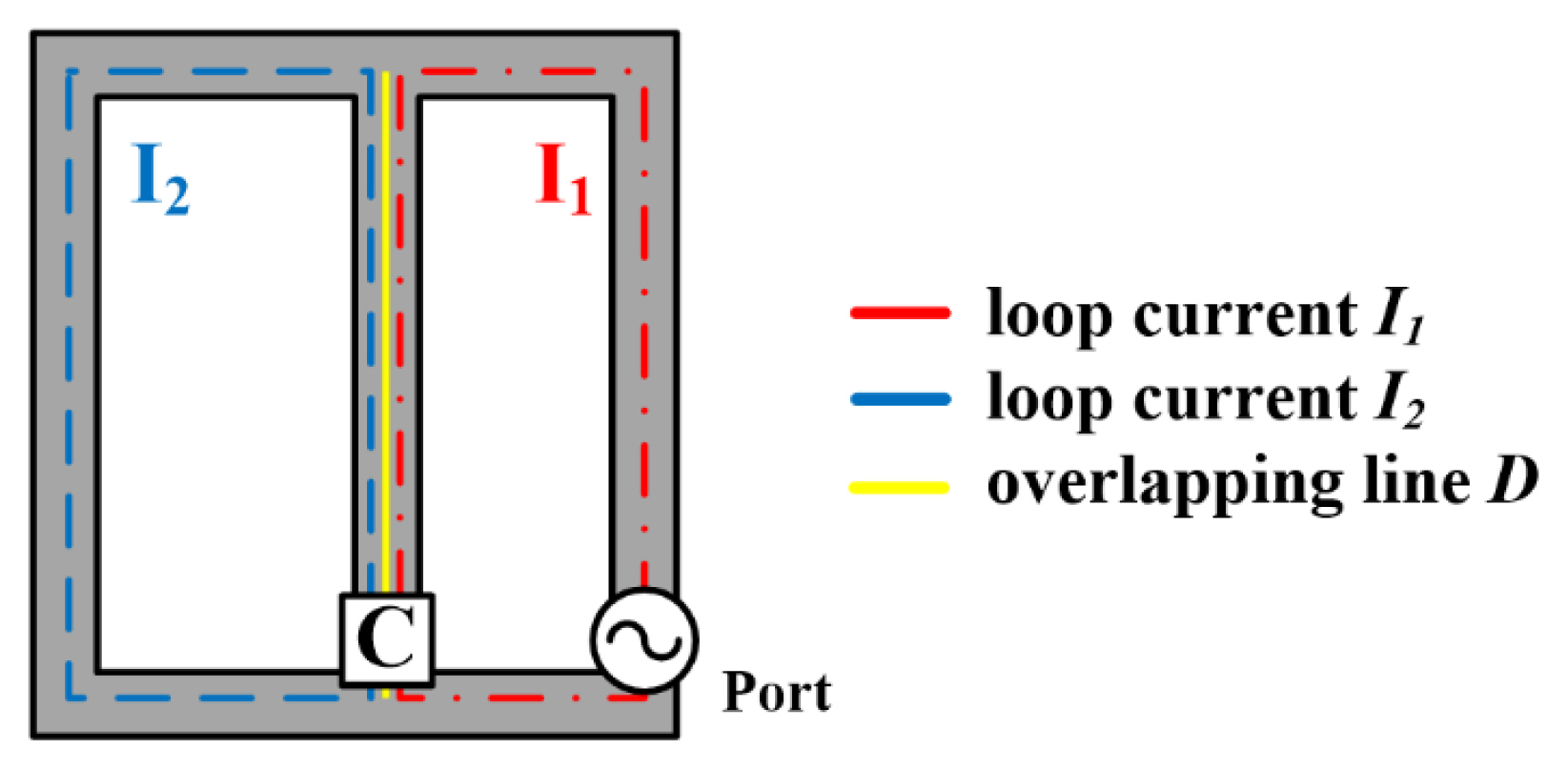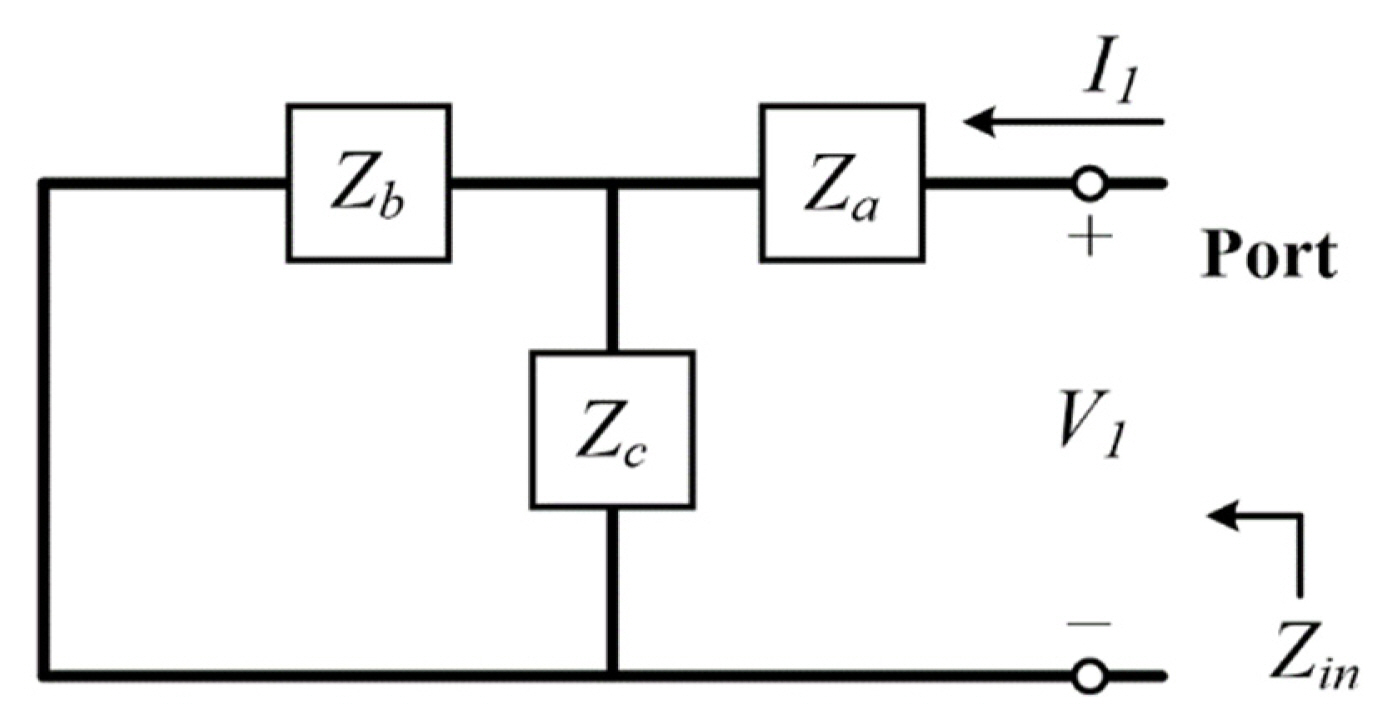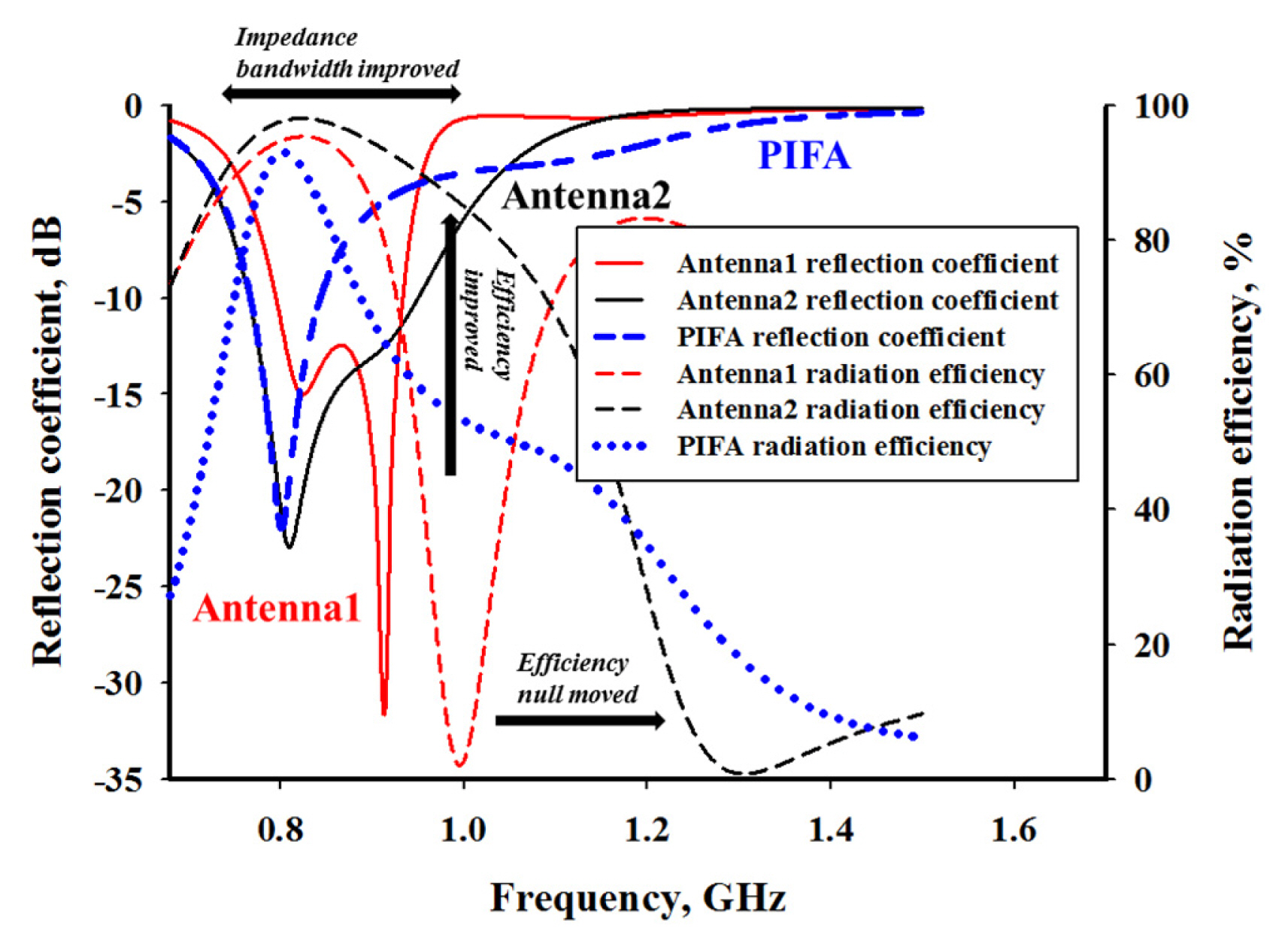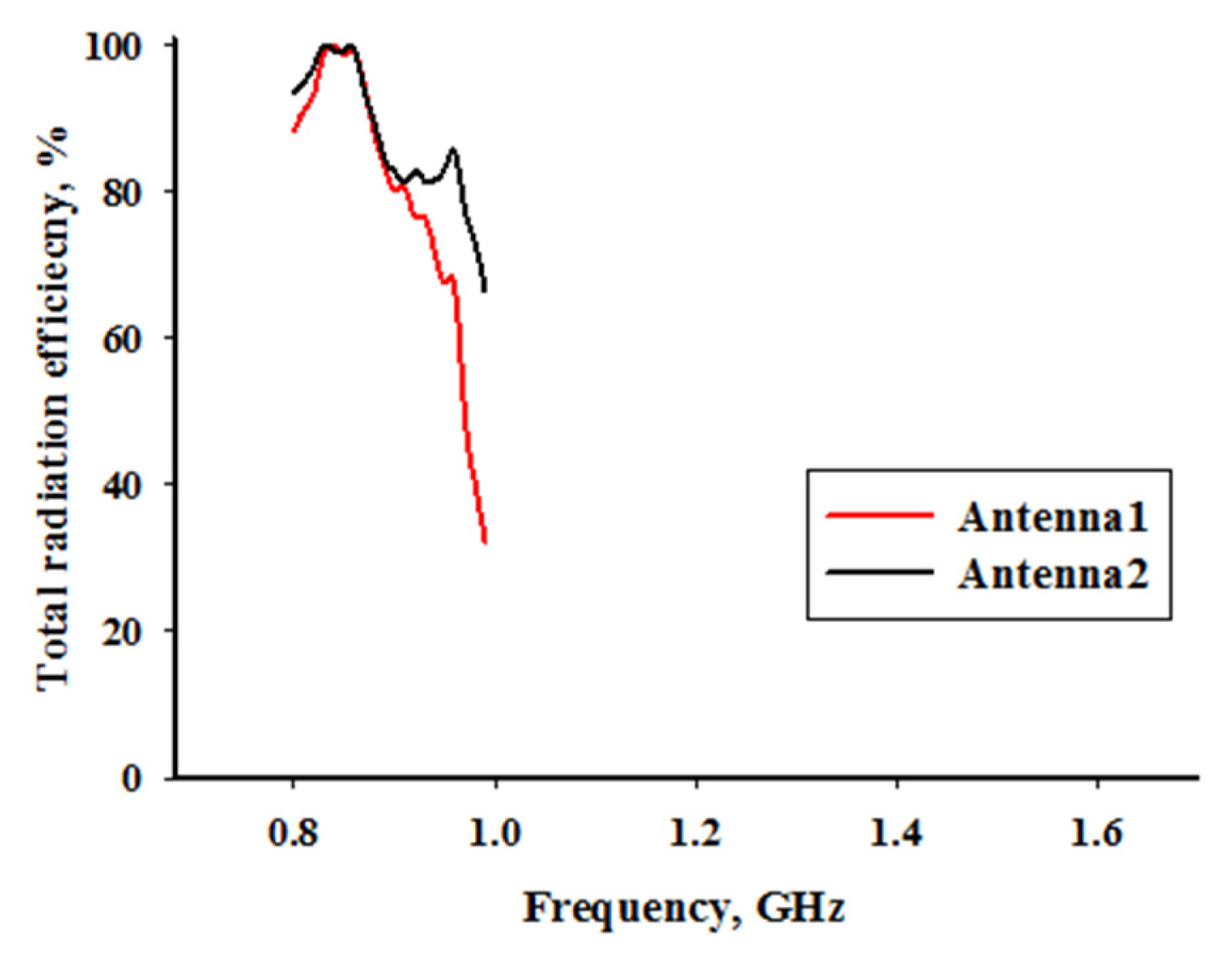 |
 |
- Search
| J. Electromagn. Eng. Sci > Volume 22(4); 2022 > Article |
|
Abstract
Parallel resonance feed structures can be used to implement wideband impedance characteristics. However, at some frequencies, parasitic resonance is generated in the feed structure. Radiation efficiency nullification occurs at the frequency of the parasitic resonance. This frequency moves with the size of the feed structure. In this paper, two antennas with different parallel resonance feed structures are presented. By simply modifying the feed structure, the frequency of the parasitic resonance is shifted. The impedance bandwidth and the efficiencies of the two antennas confirm that antenna performance is significantly enhanced when a parasitic resonance is moved away from the antenna operating band. This research provides a simple and feasible method for the design of practical high-performance wideband antennas.
As new mobile devices continue to be miniaturized, antenna sizes continue to be reduced. To maintain a compact antenna design, achieving a wider bandwidth and higher efficiency has become a serious challenge for engineers. The most widely used antenna in mobile devices is the planar inverted-F antenna (PIFA), which adds a shorting line to the monopole antenna. The shorting line and the feed line form the feed structure used to adjust the coupling between the feed and the radiating element. However, PIFA makes it difficult to achieve the desired impedance bandwidth with limited dimensions [1]. In previous studies, a wideband technology called a planar inverted-E (PIE) feed structure was proposed. This technology uses PIFA by adding a shunt capacitor to the conventional feed structure, forming a parallel resonance feed structure. Using this technology, impedance bandwidth can be increased to 2ŌĆō3 times without changing the occupying space of the antenna [2ŌĆō7]. PIE technology can greatly increase the bandwidth of antennas. However, investigators have only conducted studies on impedance bandwidth extension and have not dealt with the issue of radiation efficiency in detail. Although the impedance bandwidth has been increased by 2ŌĆō3 times, it was observed that its efficiency characteristics were aggravated in some cases within the extended impedance bandwidth [8].
In this paper, we investigate the cause of the deterioration of efficiency in a circuit that uses a parallel feeding structure, such as a PIE antenna developed to obtain a wide impedance bandwidth, and propose a solution to this problem. Through several studies on the efficiency of PIE antennas, it has been observed that efficiency was reduced to null at a specific frequency, and the frequency was controlled by the dimension of the specific point of the PIE feeding structure. We analyzed the ŌĆ£efficiency null,ŌĆØ where the efficiency decreases to zero when using the PIE feed structure and proposed a method to improve the average efficiency of the antenna by controlling the efficiency null through the modification of the feed structure. Two PIE feeding structures were presented to compare the radiation efficiency changes according to the changes in the feeding structure shape. The ground plane, feed point, and radiating element of the two antennas are nearly the same. The difference lies in the size of the parallel resonance feed structure. By modifying the size of this feed structure, the frequency of the efficiency null can be controlled. Then, significant efficiency enhancement to the antenna operating band can be achieved, and the impedance bandwidth can also be improved. Simulation and experimental results verify the effect of the modified antenna performance improvement.
The geometries of the two antennas are shown in Fig. 1. PCBs are manufactured using Frame Retardant 4 substrate (╔ør = 4.4, tan╬┤ = 0.02). Each antenna consists of the ground plane, a feed structure, and a radiating element. The size of the ground plane is 100 mm ├Ś 50 mm with a clearance of 20 mm ├Ś 50 mm for setup. The feed structure is a parallel resonator that includes a feed line, a shorting line, and a shunt capacitor line. The left-loop circuit in the feed structure includes the shorting line and the shunt capacitor line. Because of the distributed inductance and its lumped capacitance, the left-loop circuit is considered an LC-resonance circuit. The resonance frequency of this circuit is usually controlled near the operating frequency of the radiating element to achieve impedance bandwidth enhancement [9ŌĆō11]. Therefore, the size and value of the shunt capacitor of this loop remain the same in antenna 1 and antenna 2. The left-loop circuit measures 5.5 mm ├Ś 0.3 mm, where C1 = C2 = 8 pF. The right-loop circuit in the feed structure includes the shunt capacitor line and the feed line. It measures 5.5 mm ├Ś 3.2 mm for antenna 1, whereas it measures 1 mm ├Ś 3.2 mm for antenna 2.
A diagrammatic sketch of the feed structure is shown in Fig. 2. When the current flows from the feed, it flows in the right-loop circuit, producing loop current I1. Next, it couples to the connected left-loop circuit to induce loop current I2. Energy is mainly delivered to the radiating element through the shorting line, as in conventional PIFA. Thus, in the PIFA, using PIE technology, RF energy is delivered from the feed to the circuits of I1 and I2, successively, and then to the radiating element. The overlapping part of the two loop circuits is recorded as D, determining the coupling between I1 and I2.
To prove this effect, the equivalent circuit of the feed structure is introduced, as shown in Fig. 3. The port represents the feed point [12]. Z elements are lumped elements representing the impedance on a circuit line. Za is determined by the right-loop circuit of the feed structure but excludes D. Zb is determined by the left-loop circuit of the feed structure but excludes D. Zc is determined by the distributed inductance and lumped capacitance of overlapping line D. Therefore, the voltage value on D can adjust the mutual coupling strength between I1 and I2 [13].
The distributed inductance and lumped capacitance on D can cause series LC resonance at specific frequencies. This is called ŌĆ£parasitic resonance.ŌĆØ At the frequency of parasitic resonance, Zc is zero, and the induced voltage on D is shorted to zero. Thus, I2 is not efficiently generated, and energy cannot be delivered to the radiating element. Therefore, an efficiency null is generated, accompanied by a narrowed bandwidth.
The simulated reflection coefficients and radiation efficiencies of the two considered antennas are shown in Fig. 4. The efficiency null of antenna 1 is generated at 1 GHz, and that of antenna 2 is shifted to 1.3 GHz. Because the efficiency null of antenna 1 is generated close to the antenna operating band, its efficiency is sharply reduced near 1 GHz. This causes the 3:1 voltage standing wave ratio (VSWR) bandwidth of antenna 1 to be reduced. The bandwidths of antennas 1 and 2 are 160 MHz and 240 MHz, respectivelyŌĆöa major difference. Fig. 5 shows the total efficiencies of the two antennas, including the reflection losses. The measured results are in good agreement with the simulation results. The efficiencies of the two antennas at 0.8ŌĆō0.9 GHz are roughly the same, but for 0.9ŌĆō1 GHz, the efficiency of antenna 2 is significantly higher than that of antenna 1. At 990 MHz, the efficiency values of the two antennas are 32% and 66%, respectively.
In the design of the feed structure of antenna 2, the height of the right-loop circuit is reduced. This subsequently leads to the distributed inductance generated on D being reduced. Because the shunt capacitor has not changed, the parasitic resonant frequency shifts.
The parallel resonance feed structure technology for PIFA was discussed in this paper. When the overlapping part of the two loop circuits of the feed structure resonated to the point of almost being shorted, the coupling between the feed and the feed structure turned to zero, causing an efficiency null at a parasitic resonance frequency. For the proposed antenna, the size of the feed structure was modified to increase the LC resonance frequency of the overlapping line. Because the parasitic resonance frequency was far from the antenna operating band, the efficiency and impedance bandwidth were enhanced. This research is of great significance to the design and application of high-performance compact antennas.
References
1. J. S. McLean, "A re-examination of the fundamental limits on the radiation Q of electrically small antennas," IEEE Transactions on Antennas and Propagation, vol. 44, no. 5, pp. 672ŌĆō676, 1996.

2. S. Jeon, Y. Liu, S. Ju, and H. Kim, "PIFA with parallel resonance feed structure for wideband operation," Electronics Letters, vol. 47, no. 23, pp. 1263ŌĆō1265, 2011.

3. S. Jeon and H. Kim, "Mobile terminal antenna using a planar inverted-E feed structure for enhanced impedance bandwidth," Microwave and Optical Technology Letters, vol. 54, no. 9, pp. 2133ŌĆō2139, 2012.

4. S. Moon, H. Lee, and H. Kim, "A wideband loop-type antenna," Microwave and Optical Technology Letters, vol. 57, no. 7, pp. 1742ŌĆō1744, 2015.


5. K. Park, J. Lee, Y. Liu, and H. Kim, "Antenna using feed structure for wide impedance bandwidth," Microwave and Optical Technology Letters, vol. 56, no. 7, pp. 1645ŌĆō1647, 2014.


6. J. Lee and H. Kim, "Miniaturized WLAN antenna in mobile handset with wide impedance bandwidth characteristic," Microwave and Optical Technology Letters, vol. 55, no. 12, pp. 2841ŌĆō2844, 2013.

7. S. Jeon and H. Kim, "Mobile terminal antenna using a planar inverted-E feed structure for enhanced impedance bandwidth," Microwave and Optical Technology Letters, vol. 54, no. 9, pp. 2133ŌĆō2139, 2012.

8. H. Shin, J. Jeon, and H. Kim, "Efficiency enhancement of wideband mobile antenna," Electronics Letters, vol. 52, no. 3, pp. 179ŌĆō181, 2016.


9. R. Zhang, Y. Liu, H. H. Kim, and H. Kim, "Bandwidth enhancement of ground antenna using resonant feeding circuit," Electronics Letters, vol. 49, no. 7, pp. 441ŌĆō442, 2013.


10. J. Lee, Y. Liu, H. H. Kim, and H. Kim, "PIFA with dual-resonance feed structure for enhancement of impedance bandwidth," Electronics Letters, vol. 49, no. 15, pp. 921ŌĆō922, 2013.


11. R. Zhang, Y. Liu, H. Kim, and H. Kim, "PIFA using series-resonant feed structure for wide-band operations," Electronics Letters, vol. 51, no. 8, pp. 606ŌĆō608, 2015.


12. F. M. Tesche, M. Ianoz, and T. Karlsson, EMC Analysis Methods and Computational Models. New York, NY: John Wiley & Sons, 1997.
13. D. M. Pozar, Microwave Engineering. 4th ed. New York, NY: John Wiley & Sons, 2012.
Biography
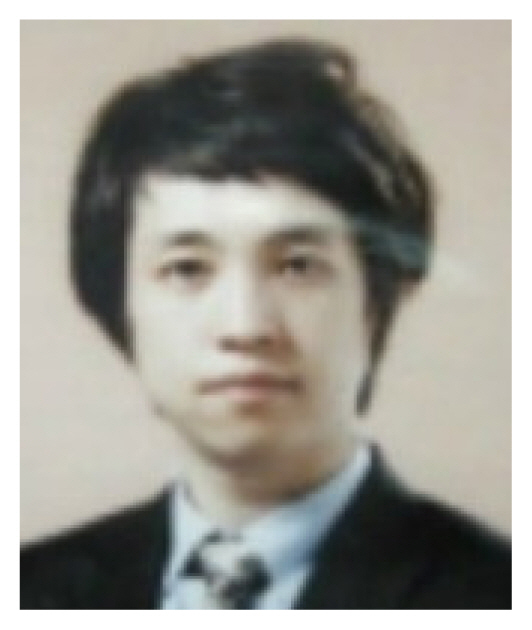
Hyunwoong Shin received his B.S. degree from Konkuk University in 2011. He gained his M.S and Ph.D. degree in engineering from the Department of Electronics and Computer Engineering, Hanyang University, Seoul, Republic of Korea, in 2014 and 2020, respectively. His research interests is mobile antenna design using ground characteristic mode analysis.
Biography
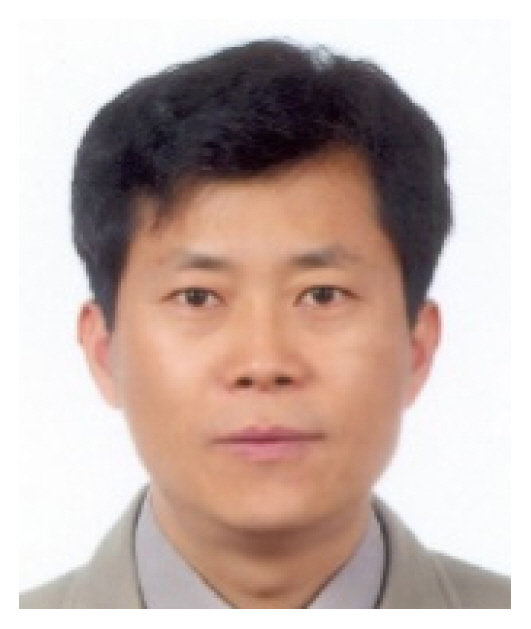
Hyeongdong Kim received his B.S. and M.S. degrees from the Seoul National University, Seoul, Republic of Korea, in 1984 and 1986, respectively, and his Ph.D. degree from the University of Texas at Austin, in 1992. From May 1992 to February 1993, he was a Post-Doctoral Fellow at the University of Texas at Austin. In 1993, he worked as a professor at the Department of Electrical and Computer Engineering, Hanyang University, Seoul, Republic of Korea. His current research interest are various antenna theories and designs based on ground characteristic mode analysis, namely, wideband, high-efficiency, circular polarization, MIMO, and high-sensitivity antennas.
- TOOLS
-
METRICS

-
- 2 Crossref
- 0 Scopus
- 2,947 View
- 112 Download





